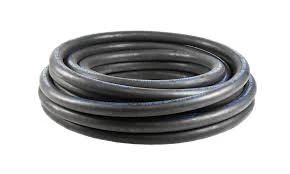power steering high pressure hose repair
Power Steering High Pressure Hose Repair A Comprehensive Guide
The power steering system in your vehicle plays a crucial role in ensuring smooth and precise steering. One of its essential components is the high-pressure hose, which transports power steering fluid from the pump to the steering gear. Over time, this hose can wear out, leading to leaks, reduced steering performance, and potential safety hazards. If you're experiencing issues with your power steering system, learning how to identify and repair a high-pressure hose can save you time and money.
Identifying High Pressure Hose Issues
Symptoms of a failing high-pressure hose can include a noisy power steering pump, difficulty steering, or visible fluid leaks around the hose. The fluid is typically red or clear, and any pooling of this fluid underneath your vehicle should raise immediate concern. Before attempting a repair, ensure that there are no other underlying issues within the power steering system.
Tools and Materials Needed
To repair a high-pressure hose, you will need several tools and materials, including
1. A new high-pressure hose (ensure it is compatible with your vehicle model) 2. Wrenches or socket set 3. Pliers 4. Fluid catch pan 5. Power steering fluid 6. A clean rag
Repair Process
1. Safety First Begin by ensuring your vehicle is parked on a level surface with the engine off. Use wheel chocks to prevent any movement.
power steering high pressure hose repair

2. Locate the Hose Open the hood and locate the power steering pump to find the high-pressure hose. Familiarize yourself with its path and attachments.
3. Drain Fluid Before removing the hose, place a fluid catch pan under the power steering pump to catch any leaking fluid.
4. Disconnect the Old Hose Use the appropriate size wrench to loosen and disconnect the fittings at both ends of the high-pressure hose. Be cautious, as some fluid may still leak out.
5. Install the New Hose Position the new hose in place, ensuring that it follows the same routing as the old one. Securely fasten both ends, making sure not to over-tighten, which could damage the fittings.
6. Refill Power Steering Fluid After installation, refill the power steering reservoir with the recommended fluid type. It's crucial to use the correct fluid to avoid further issues.
7. Check for Leaks Start the engine and turn the steering wheel from lock to lock several times. Inspect the hose and connections for any signs of leaks. If everything looks good, you're ready to go.
Conclusion
Repairing a power steering high-pressure hose is a manageable task for those with basic mechanical skills. By following these steps and using the right tools, you can restore the integrity of your power steering system and ensure your vehicle operates safely and smoothly. Regular maintenance of your power steering components can prevent major issues and extend the life of your vehicle.
-
Ultimate Spiral Protection for Hoses & CablesNewsJun.26,2025
-
The Ultimate Quick-Connect Solutions for Every NeedNewsJun.26,2025
-
SAE J1401 Brake Hose: Reliable Choice for Safe BrakingNewsJun.26,2025
-
Reliable J2064 A/C Hoses for Real-World Cooling NeedsNewsJun.26,2025
-
Heavy-Duty Sewer Jetting Hoses Built to LastNewsJun.26,2025
-
Fix Power Steering Tube Leaks Fast – Durable & Affordable SolutionNewsJun.26,2025

